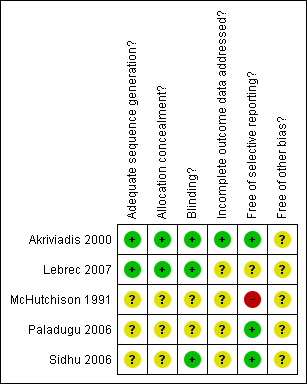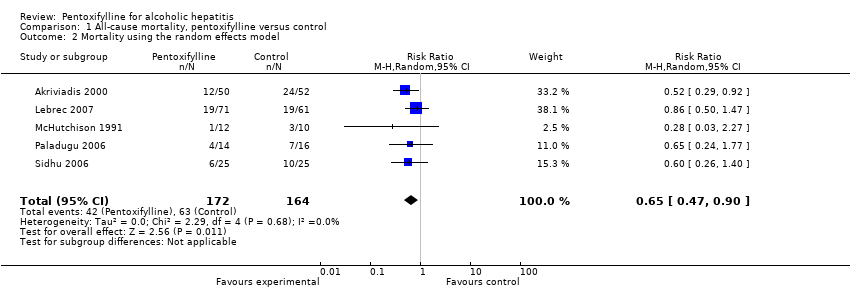Contenido relacionado
Revisiones y protocolos relacionados
Janus C Jakobsen, Emil Eik Nielsen, Joshua Feinberg, Kiran Kumar Katakam, Kristina Fobian, Goran Hauser, Goran Poropat, Snezana Djurisic, Karl Heinz Weiss, Milica Bjelakovic, Goran Bjelakovic, Sarah Louise Klingenberg, Jian Ping Liu, Dimitrinka Nikolova, Ronald L Koretz, Christian Gluud | 18 septiembre 2017
Chavdar S Pavlov, Daria L Varganova, Giovanni Casazza, Emmanuel Tsochatzis, Dimitrinka Nikolova, Christian Gluud | 9 abril 2019
Kristiana Nikolova, Christian Gluud, Berit Grevstad, Janus C Jakobsen | 6 abril 2014
Giuseppe Fede, Giacomo Germani, Christian Gluud, Kurinchi Selvan Gurusamy, Andrew K Burroughs | 15 junio 2011
Harry D Zacharias, Antony P Zacharias, Lise Lotte Gluud, Marsha Y Morgan | 17 junio 2019
Andrea Rambaldi, Christian Gluud | 11 noviembre 2015
Ee Teng Goh, Mette L Andersen, Marsha Y Morgan, Lise Lotte Gluud | 10 agosto 2017
Avik Majumdar, Davide Roccarina, Douglas Thorburn, Brian R Davidson, Emmanuel Tsochatzis, Kurinchi Selvan Gurusamy | 28 marzo 2017
Jelena S Rudic, Goran Poropat, Miodrag N Krstic, Goran Bjelakovic, Christian Gluud | 12 diciembre 2012
Jacky TP Siua, Trina Nguyen, Ricky D Turgeona | 9 diciembre 2020
Respuestas clínicas Cochrane
Dane Gruenebaum | 8 agosto 2016


















